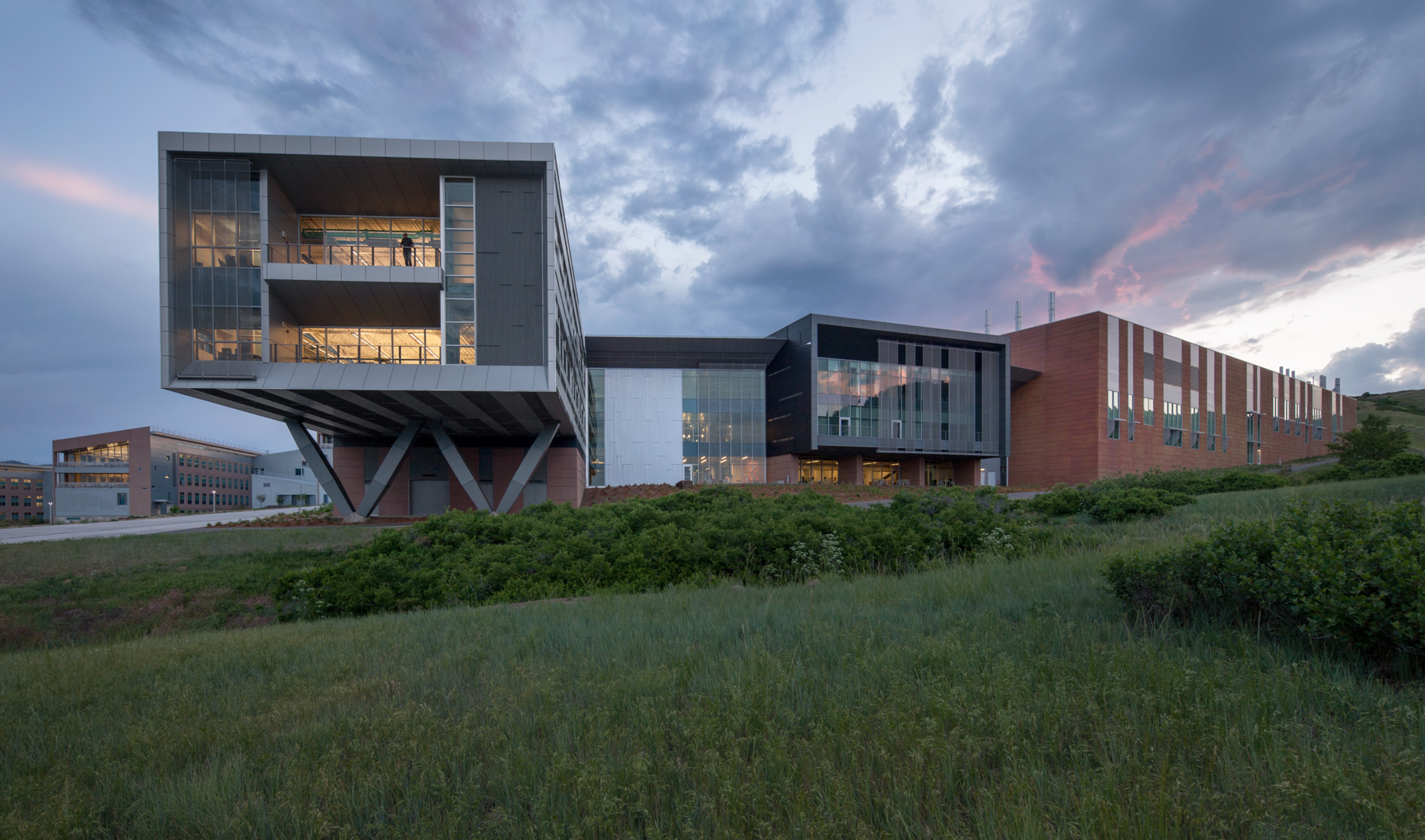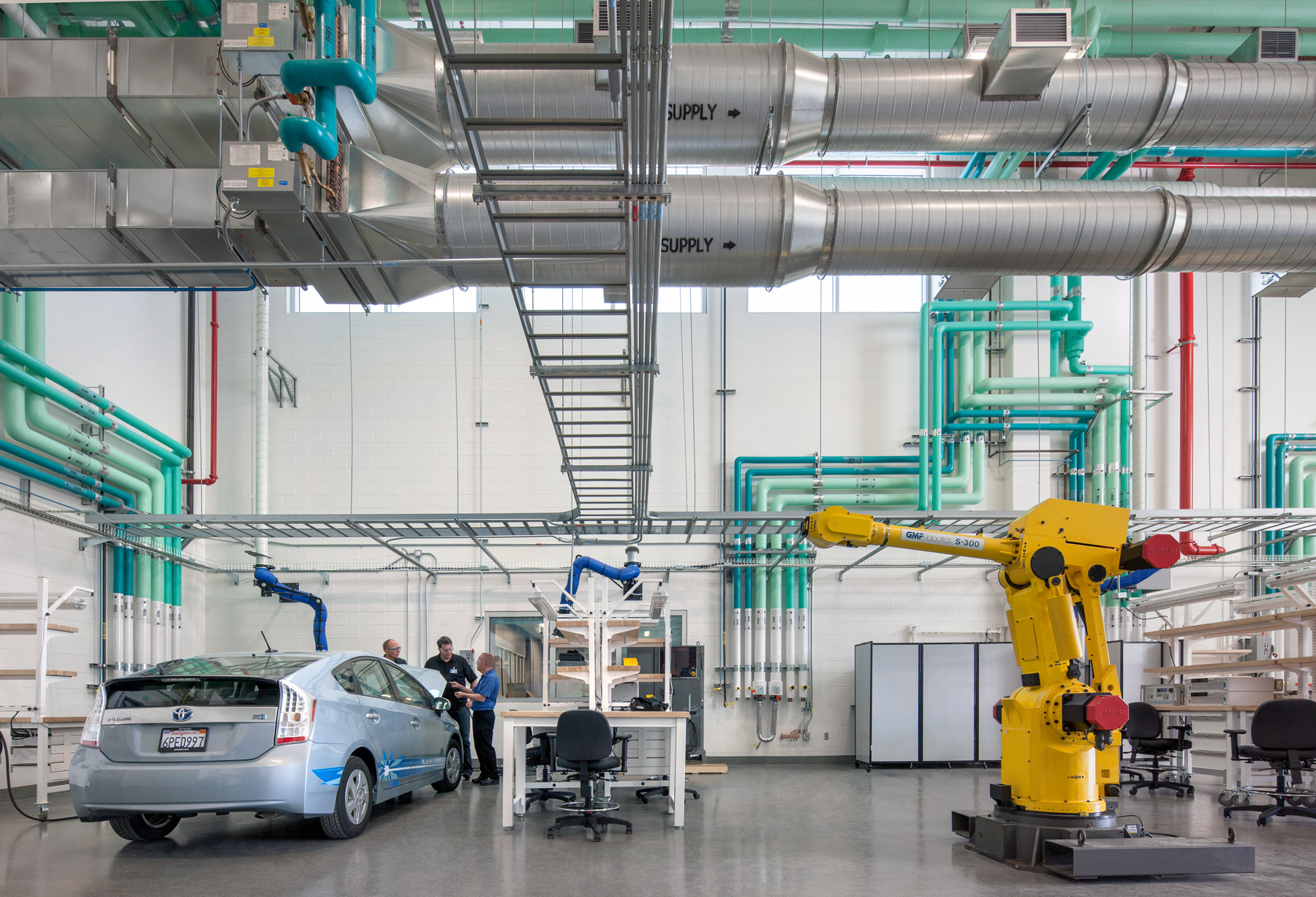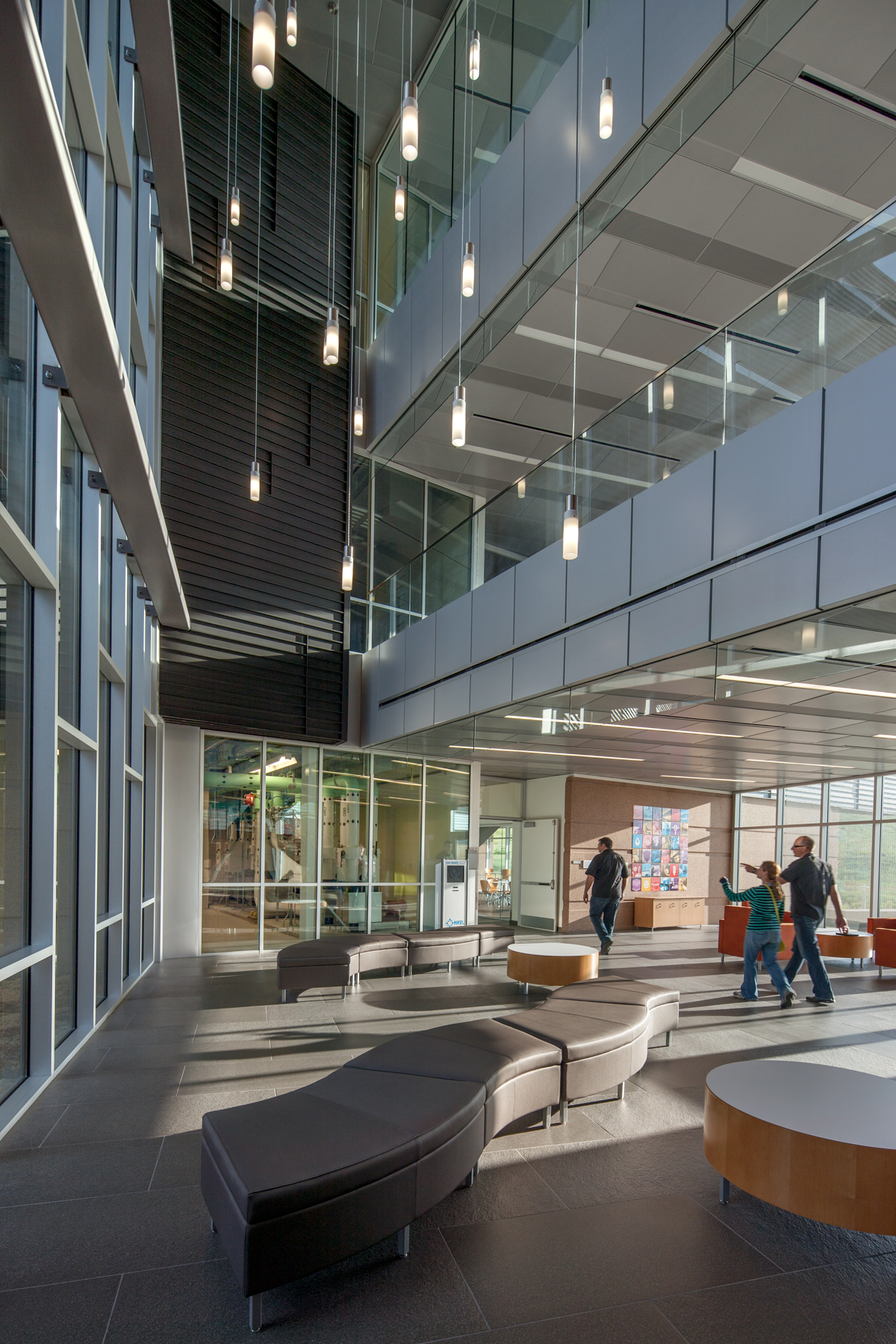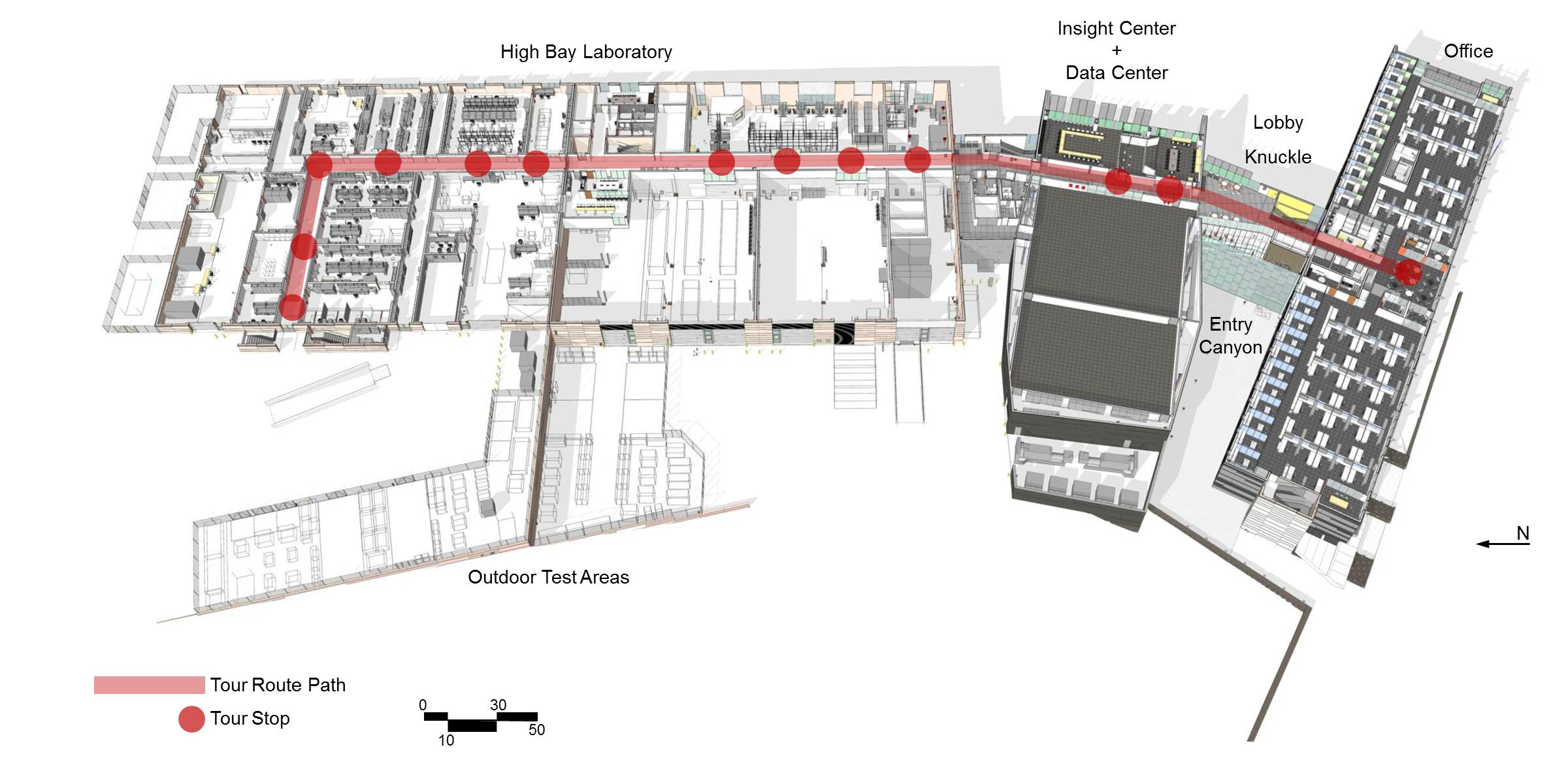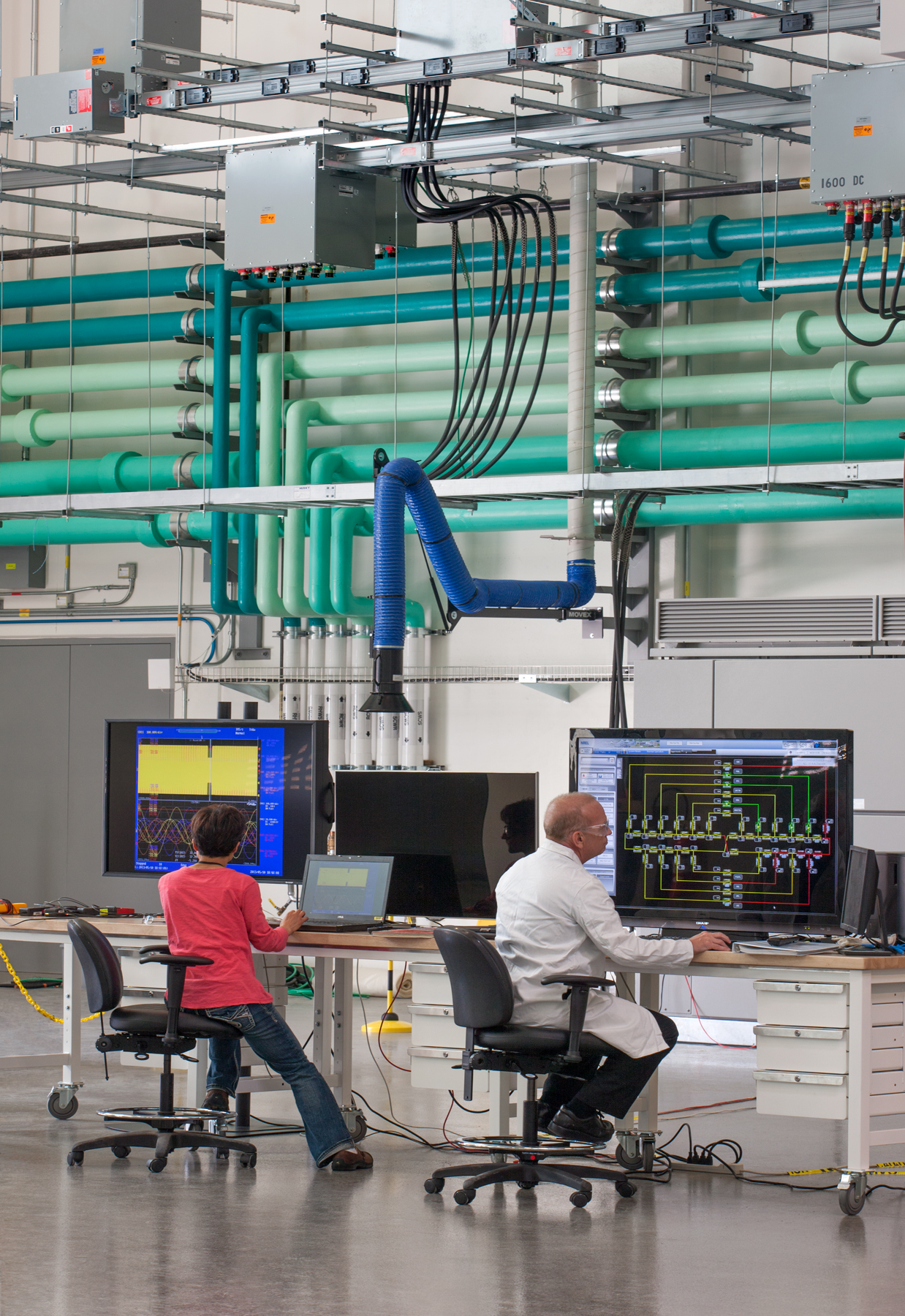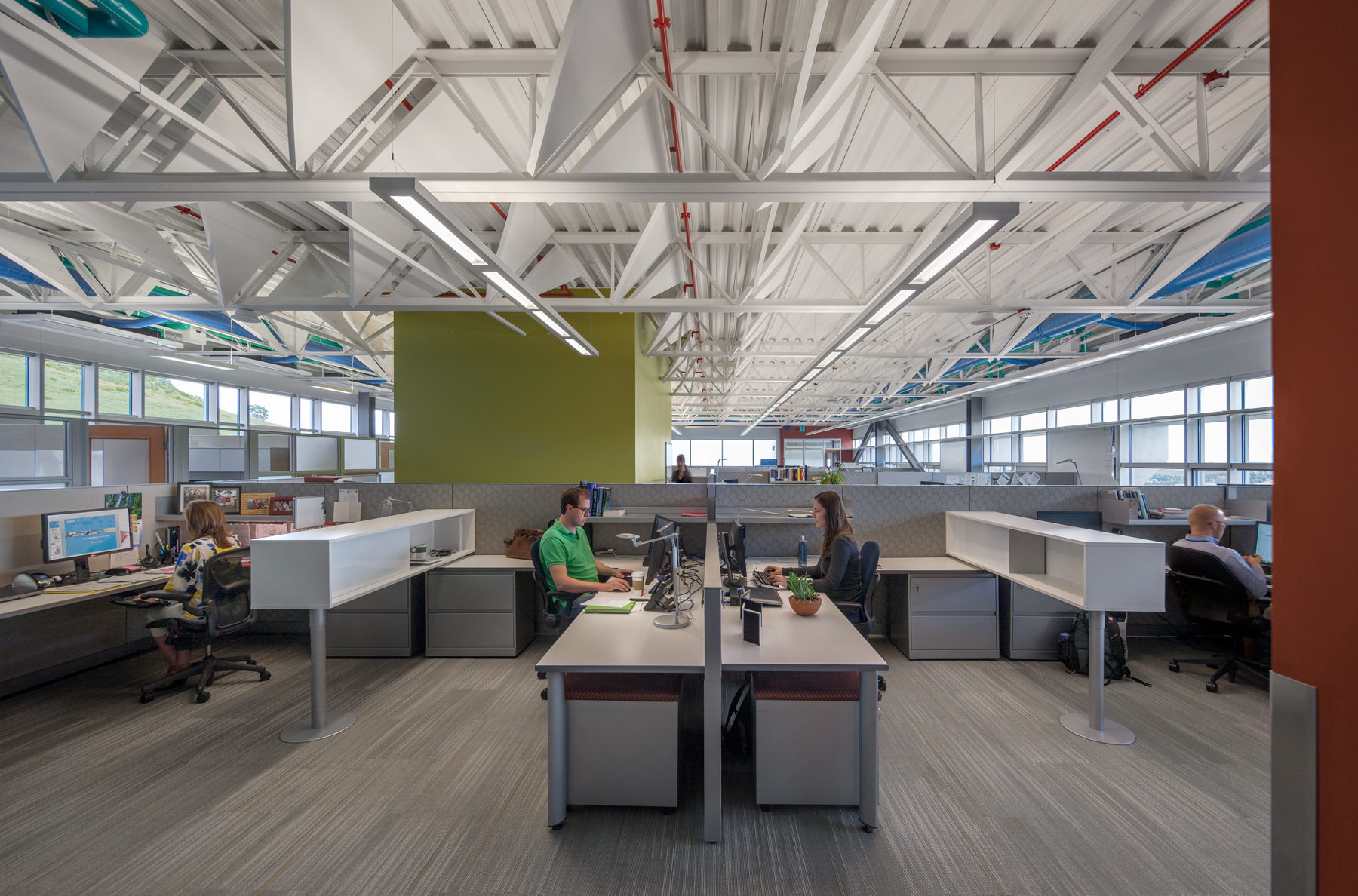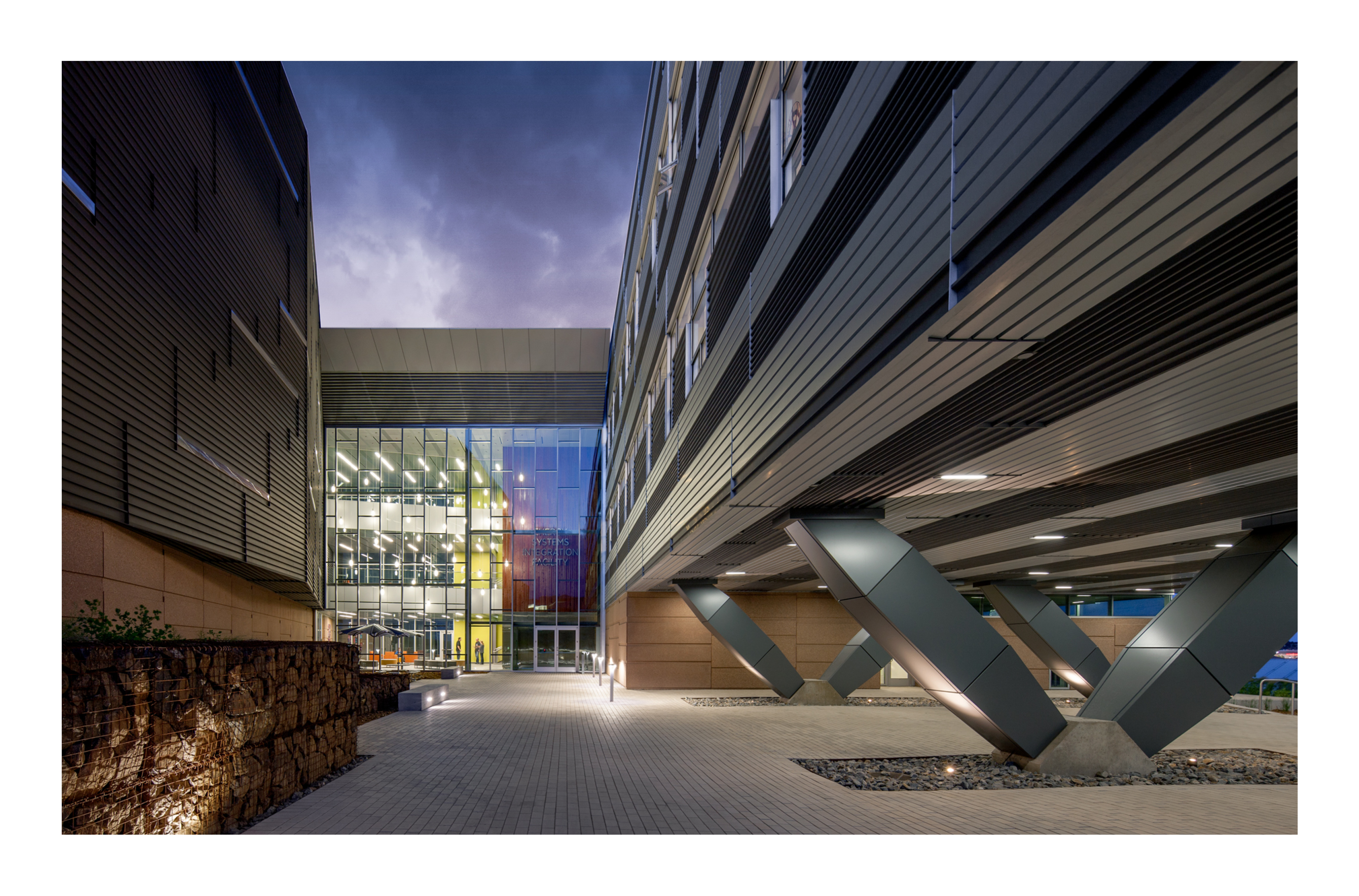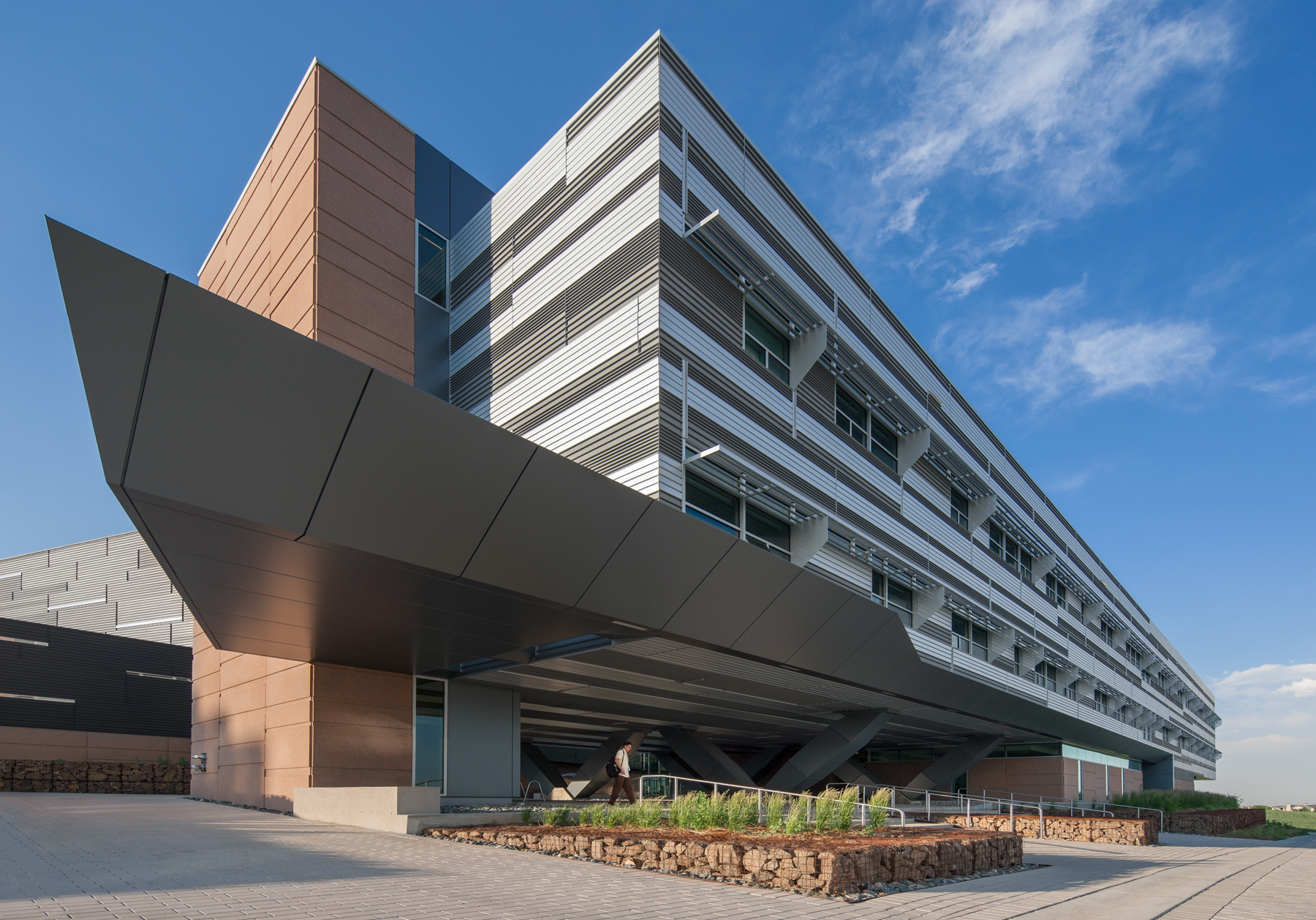One of the nation’s newest and most premier energy research facilities has been named R&D Magazine’s 2014 Laboratory of the Year.
Designed and built by SmithGroupJJR and JE Dunn Construction, the $135 million Energy Systems Integration Facility (ESIF) is located at the U.S. Department of Energy’s National Renewable Energy Laboratory in Golden, Colorado. Its one-of-a-kind design will assist NREL, and its partners, to shape the energy systems of the future.
The prestigious and international Lab of the Year competition, which is in its 48th year, recognizes the best new and renovated laboratories that combine all aspects of the building into a superior working environment. It showcases new and emerging thinking, sustainable practices and creative responses to challenges in the design, construction and operation of modern laboratories.
ESIF received this significant award for being a first-of-its-kind 182,500 sf research user facility with a unique merging of three very specialized components: an ultra-energy efficient workplace that consumes 74% less energy than the national average for office buildings, one of the world’s most energy efficient high performance computing data centers, and sophisticated high-bay laboratory spaces with outdoor test areas.
All of the labs are connected by a research electrical distribution bus (REDB), which functions as a power integration circuit capable of connecting multiple sources of energy with experiments.
The unique design of the facility, which houses 200 researchers, works in tandem to advance NREL’s sustainable mission of integrating clean and sustainable energy technologies into the grid.
“To have the ESIF facility, which advances research capabilities that don’t exist anywhere else in the world, recognized for such a prestigious award only proves the hard work and dedication of the project team,“ states Brad Woodman, AIA, LEED AP BD+C, vice president and director of SmithGroupJJR’s Phoenix office. “Congratulations to the entire ESIF team for a job well done on a project that will change the future of energy thought and use worldwide.”
Responsive Design
A showcase of sustainable design, the ESIF incorporates the best in energy efficiency, environmental performance, and advanced controls using a “whole building” integrated design approach that complies with Energy Star standards.
SmithGroupJJR and JE Dunn worked together to support the Department of Energy’s goal to develop an energy efficient building that imparts minimal impact on the environment. The ESIF earned a LEED Platinum rating from the U.S. Green Building Council, and is one of the highest certified facilities of its type to include a high performance computing data center as a major building component.
To construct such a unique facility the design-build team applied technology, like real time electronic drawings accessible through portable kiosks and hand held tablets allowing for a 100% paperless process, to deliver the project in a highly collaborative and accelerated pace while maintaining the strictest standards of quality and sustainable strategies. The building was dedicated in September 2013.
“Our team was continually challenged and encouraged to think outside the box which lead to this tremendous outcome,” shares Rodd Merchant, senior vice president at JE Dunn Construction and manager of the design-build team. “This award serves as an acknowledgement that hard work pays off.”
Unique Capabilities
Central to the laboratories is the REDB, the nation’s first integrated, megawatt-scale hardware-in-the-loop real-time simulation system. The REDB allows researchers and manufacturers to conduct integration tests at full power and actual load levels in real-time simulation, and evaluate component and system performance before going to market.
Running parallel with the REDB is the Supervisory Control and Data Acquisition (SCADA) system that monitors and controls facility-based processes and gathers and disseminates real time data for collaboration and visualization. Both systems were engineered by Affiliated Engineers, Inc. (AEI).
A petascale high performance computing data and visualization center extends the ESIF’s research capabilities and enables large-scale modeling and simulation of material properties, processes, and fully integrated systems that would be cost-prohibitive to study by direct experimentation.
SmithGroupJJR, a recognized leader in architecture, engineering, and planning, served as designer, lab planner and engineer of the three-story research complex. The firm also received a Lab of the Year Special Mention in 2008 for their work on NREL’s Science & Technology Facility. JE Dunn Construction performed as general contractor for the design-build venture. AEI engineered the high bay laboratory spaces and the REDB and SCADA systems.
Judging for this year’s competition was performed by an expert panel of architects, engineers, equipment suppliers, researchers and the editors of R&D Magazine, Laboratory Design newsletter, and co-sponsor Scientific Equipment and Furniture Association (SEFA).
Awards for the Laboratory of the Year competition will be presented at the 2014 Laboratory Design Conference on April 3, at the Westin Waltham Boston Hotel in Massachusetts.
About the Team
SmithGroupJJR (www.smithgroupjjr.com) is ranked as one of the nation’s top design firms by Architect, the magazine of the American Institute of Architects. The firm’s nationally recognized Science & Technology Practice has completed the planning and design of over 18 million square feet of academic, corporate and government research laboratories across the U.S., ranging from small laboratory renovations to large research campuses. A national leader in sustainable design, SmithGroupJJR has 351 LEED professionals and 102 LEED certified projects.
JE Dunn Construction (www.jedunn.com) maintains local offices in Denver and Colorado Springs, providing quality construction throughout the Rocky Mountains. JE Dunn Construction Company is the 12th largest domestic building contractor in the United States with 20 offices in 14 states. With more than 61 LEED professionals in Colorado and more than 100 LEED certified projects around the country, JE Dunn is a nationally ranked sustainable contractor.
Affiliated Engineers, Inc. (www.aeieng.com) is a multi-disciplinary consulting engineering firm specializing in technically complex projects nationally and internationally in the research, healthcare, energy and utilities, industrial, and sustainability markets. Building Design + Construction magazine’s #1 Science & Technology Engineering Firm, AEI has received five R&D Magazine Laboratory of the Year Awards, including three of the last four and eight other LOY honors. With 157 LEED-certified professionals in twelve offices, AEI has designed and engineered 147 LEED-accredited projects.
Related Stories
| Nov 10, 2011
Skanska Moss to expand and renovate Greenville-Spartanburg International Airport
The multi-phase terminal improvement program consists of an overall expansion to the airport’s footprint and major renovations to the existing airport terminal.
| Nov 10, 2011
Suffolk Construction awarded MBTA transit facility and streetscape project
The 21,000-sf project will feature construction of a cable-stayed pedestrian bridge over Ocean Avenue, an elevated plaza deck above Wonderland MBTA Station, a central plaza, and an at-grade pedestrian crossing over Revere Beach Boulevard
| Nov 10, 2011
Thornton Tomasetti’s Joseph and Choi to co-chair the Council on Tall Buildings and Urban Habitat’s Outrigger Design Working Group
Design guide will describe in detail the application of outriggers within the lateral load resisting systems of tall buildings, effects on building behavior and recommendations for design.
| Nov 9, 2011
Lincoln Center Pavilion wins national architecture and engineering award
The project team members include owner Lincoln Center for the Performing Arts, New York; design architect and interior designer of the restaurant, Diller Scofidio + Renfro, New York; executive architect, FXFOWLE, New York; and architect and interior designer of the film center, Rockwell Group, New York; structural engineer Arup (AISC Member), New York; and general contractor Turner Construction Company (AISC Member), New York.
| Nov 9, 2011
Sika Sarnafil Roof Recycling Program recognized by Society of Plastics Engineers
Program leads the industry in recovering and recycling roofing membrane into new roofing products.
| Nov 9, 2011
American Standard Brands joins the Hospitality Sustainable Purchasing Consortium
American Standard will collaborate with other organizations to build an industry-wide sustainability performance index.
| Nov 8, 2011
Transforming a landmark coastal resort
Originally built in 1973, the building had received several alterations over the years but the progressive deterioration caused by the harsh salt water environment had never been addressed.
| Nov 8, 2011
WEB EXCLUSIVE: Moisture-related failures in agglomerated floor tiles
Agglomerated tiles offer an appealing appearance similar to natural stone at a lower cost. To achieve successful installations, manufacturers should provide design data for moisture-related dimensional changes, specifiers should require in-situ moisture testing similar to those used for other flooring materials, and the industry should develop standards for fabrication and installation of agglomerated tiles.


